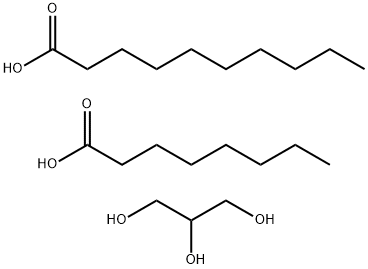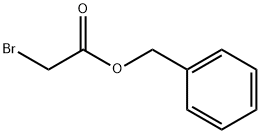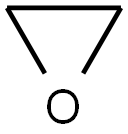GLYCIDYL NEODECANOATE, MIXTURE OF BRANCHED ISOMERS
- CAS NO.:26761-45-5
- Empirical Formula: C13H24O3
- Molecular Weight: 228.32786
- MDL number: MFCD00192194
- EINECS: 247-979-2
- SAFETY DATA SHEET (SDS)
- Update Date: 2024-12-18 14:08:52

What is GLYCIDYL NEODECANOATE, MIXTURE OF BRANCHED ISOMERS?
Chemical properties
yellow liquid
The Uses of GLYCIDYL NEODECANOATE, MIXTURE OF BRANCHED ISOMERS
This material may be used as an epoxy resin reactive diluent, as a component of epoxy coating systems, and as an ingredient in alkyl resins to modify film properties. Improved chemical resistance, weatherability, film hardness, and acid number control are the properties enhanced in epoxy resin applications by the use of this material.
Production Methods
The glycidyl ester of neodecanoic acid (NAGE) is produced by the reaction of neodecanoic acid with epichlorohydrin in the presence of base.
General Description
Clear yellow liquid.
Air & Water Reactions
Insoluble in water.
Reactivity Profile
GLYCIDYL NEODECANOATE, MIXTURE OF BRANCHED ISOMERS reacts vigorously with strong oxidizing agents and strong Lewis and mineral acids. Reacts with considerable heat release with many curing agents.
Fire Hazard
GLYCIDYL NEODECANOATE, MIXTURE OF BRANCHED ISOMERS is probably combustible.
Carcinogenicity
The mutagenic activity of glycidyl
ester of neodecanoic acid was investigated in cultures of
S. typhimutium TA98, TA100, TA102, TA1535, TA1537, and
TA1538; E. coli WP2 and WP2 uvr A; and in cultures of
S. cerevisiae JD1, both with and without the incorporation of
rat liver microsomal enzymes. The results
indicated that glycidyl ester of neodecanoic acid induced an
increase in mutation frequency only after metabolic activation
in Salmonella strains TA100, TA1535, and TA1538. The
mutation frequency was within the spontaneous frequency
range in the absence of S9 fractions for these strains; however,
in some experiments weak responses were observed in the
absence of S9. In TA98, TA102, TA1537, and
TA1538, there was no increase in mutation frequency either
with or without S9. There was no increase in gene mutation
and frequency in either of the E. coli strains with or without
activation. Similarly, in Saccharomyces no changes in gene
conversion frequency were reported. In general, no significant
effects were detected below 100mg of material per plate,
suggesting that the mutagenic activity was relatively weak.
The bacterial results indicate thatmutagenicity was expressed
by both base-pair substitution and frameshift mechanisms.
In other studies, monolayer slides of cultures of rat liver
(RL1) cells were exposed to culture medium containing
glycidyl ester of neodecanoic acid, and after 24 h incubation,
the slides were processed for metaphase chromosome analysis
. In the RL1 cells, NAGE induced a low frequency
of chromatid aberrations at concentrations just below the
cytotoxic dose (50 mg/mL).
Properties of GLYCIDYL NEODECANOATE, MIXTURE OF BRANCHED ISOMERS
| Boiling point: | 310.14°C (rough estimate) |
| Density | 0.966 g/mL at 25 °C(lit.) |
| vapor pressure | 1.5Pa at 24.85℃ |
| refractive index | n20/D 1.444(lit.) |
| Flash point: | 113 °C |
| Water Solubility | 70mg/L at 20℃ |
| Stability: | Stable. Combustible. Reacts vigorously with strong oxidizing agents, acids, curing agents. |
| EPA Substance Registry System | Glycidyl neodecanoate (26761-45-5) |
Safety information for GLYCIDYL NEODECANOATE, MIXTURE OF BRANCHED ISOMERS
Computed Descriptors for GLYCIDYL NEODECANOATE, MIXTURE OF BRANCHED ISOMERS
New Products
(S)-3-Aminobutanenitrile hydrochloride 4-Methylphenylacetic acid N-Boc-D-alaninol N-BOC-D/L-ALANINOL Tert-butyl bis(2-chloroethyl)carbamate 3-Morpholino-1-(4-nitrophenyl)-5,6-dihydropyridin- 2(1H)-one Furan-2,5-Dicarboxylic Acid Tropic acid 1-Bromo-3,5-Di-Tert-Butylbenzene S-2-CHLORO PROPIONIC ACID ETHYL ISOCYANOACETATE 2-Bromo-1,3-Bis(Dimethylamino)Trimethinium Hexafluorophosphate 4-IODO BENZOIC ACID 3-NITRO-2-METHYL ANILINE 1-(2,4-DICHLOROPHENYL) ETHANAMINE (2-Hydroxyphenyl)acetonitrile 4-Bromopyrazole 2-(Cyanocyclohexyl)acetic acid 4-methoxy-3,5-dinitropyridine 1-(4-(aminomethyl)benzyl)urea hydrochloride 2-aminopropyl benzoate hydrochloride diethyl 2-(2-((tertbutoxycarbonyl)amino) ethyl)malonate tert-butyl 4- (ureidomethyl)benzylcarbamate Ethyl-2-chloro((4-methoxyphenyl)hydrazono)acetateRelated products of tetrahydrofuran








You may like
-
 2033-24-1 98%View Details
2033-24-1 98%View Details
2033-24-1 -
 42831-50-5 5-METHYLISOXAZOLE-4-CARBOXYLIC ACID 98%View Details
42831-50-5 5-METHYLISOXAZOLE-4-CARBOXYLIC ACID 98%View Details
42831-50-5 -
 1975-50-4 98%View Details
1975-50-4 98%View Details
1975-50-4 -
 2-HYDROXY BENZYL ALCOHOL 98%View Details
2-HYDROXY BENZYL ALCOHOL 98%View Details
90-01-7 -
 2-Chloro-1,3-Bis(Dimethylamino)Trimethinium Hexafluorophosphate 221615-75-4 98%View Details
2-Chloro-1,3-Bis(Dimethylamino)Trimethinium Hexafluorophosphate 221615-75-4 98%View Details
221615-75-4 -
 61397-56-6 CIS BROMO BENZOATE 98%View Details
61397-56-6 CIS BROMO BENZOATE 98%View Details
61397-56-6 -
 14714-50-2 (2-Hydroxyphenyl)acetonitrile 98+View Details
14714-50-2 (2-Hydroxyphenyl)acetonitrile 98+View Details
14714-50-2 -
 118753-70-1 98+View Details
118753-70-1 98+View Details
118753-70-1